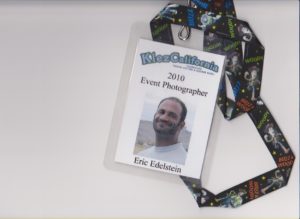Henry Carrey
History of Yiddish Song |
 |
A historical overview of Yiddish song from the early 19th century to the present. Nigunim and the effect of nigunim and khazones (cantorial singing) on songs; folk songs and folkshtimlikhe lider; art songs and theatre songs. Illustrated with recorded selections. Handouts and the opportunity to sing one or two songs. |
|
Gabriella Safran
Humor, Jewish Identity and the Monologue |
 |
We will read one of Sholem Aleichem’s short “Monologn” in Yiddish and English translation, and consider why these texts — with their famously irritating narrators — appealed to readers. |
|
Zachary Baker & Ken Blady
Yiddish in the Hasidic World |
 |
Yiddish continues to play a significant role in contemporary Hasidic communities. Mame-loshn (Yiddish) and loshn-koydesh (Hebrew) coexist with Hasidic English, which has emerged as a new Jewish language. Ken Blady, who grew up in a Hasidic family, will distribute a Glossary of Hasidic Terms and explain some basic concepts such as shrayim, pidyoinis, kvitl, kashketl, and gartl; talk about the regional differences between those who wear shtraymlekh and those who wear spudiks, and discuss Yiddish within the Hasidish world. Zachary Baker will show how Yiddish has become a factor in the consumer marketplace, with a proliferation of glossy magazines. He will discuss Hasidic publications in Yiddish and recent findings by ethnographers and historians. |
|
Yael Chaver
History of Yiddish Language and Literature |
 |
Throughout its thousand-year history, Yiddish has been enriched by elements of ancient, medieval, and modern languages, thanks to the widespread geographical distribution of its speakers and readers. Most Yiddish texts up to the mid-nineteenth century were religious, but Yiddish literature then started moving quickly into the modern world. Fiction, drama, and poetry flourished, mainly in Europe. In the twentieth century, avant-garde poets, many of them women, were influenced by international literary trends and wrote in Europe and the United States. Yael will survey Yiddish literature from its origins to modern times. |
|
Sharon Bernstein
Yiddish Song Rarities |
 |
Take a stroll down a cobblestoned street, peer through the window of a strange house, take flight with bees and angels, and discover new worlds in lesser-known Yiddish songs. |
|
Naomi Seidman
The Yiddish Epitaph |
 |
We will read a few self-authored epitaphs/poems, including Sholem Aleichem’s and Anna Margolin’s, exploring the Yiddish practice of composing one’s own epitaph as a distinctive genre. Texts will be available in both Yiddish and English translation, along with photos of the inscribed gravestones. |
|
Mark Levy
In Kamf: Yiddish Songs of the Jewish Labor Movement |
 |
What began as local organizing efforts in Poland and Russia continued in the U.S. as immigrant workers quickly learned that labor in the New World needed unions, too. You will learn songs from both sides of the ocean which chronicle this struggle for better pay and conditions in the workplace. |
|
Ken Blady
The World of our Great-Grandparents: Eastern European Jewry from Earliest Times to 1881 |
 |
In this informal lecture, supplemented with DVD documentary, Ken will portray Jewish life in Eastern Europe, specifically Greater Poland (which included Lithuania and Ukraine) up to the mass migration to New Worlds in the late 19th century. Topics will include origins theories of the Ashkenazim and the Khazar thesis; development of the Yiddish language and the difference between a shtut, shtetl and derfl; chafing under the czar in the Pale of Settlement; and “Was there a Russian Jewry before 1917?” |














